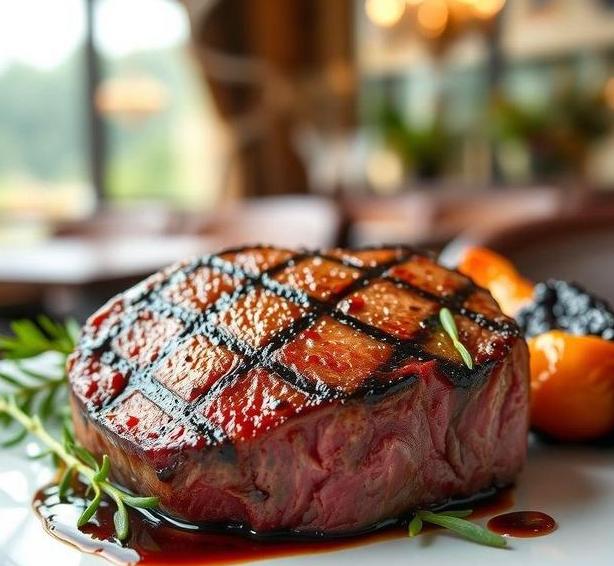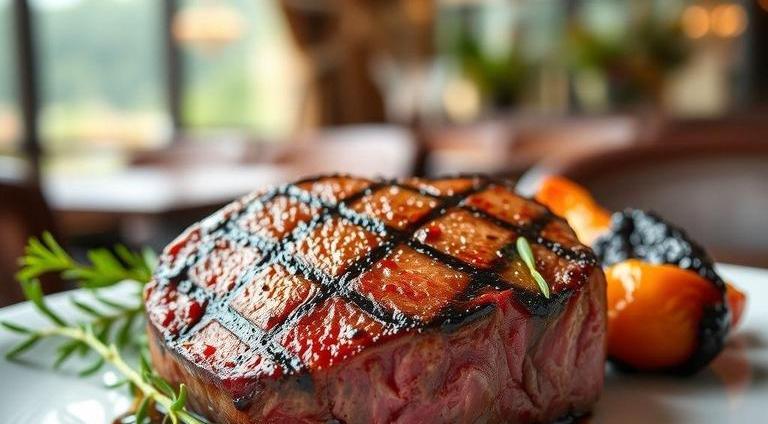Red meat-beef, lamb, pork, and venison-is a staple in many diets worldwide, known for its rich flavor, high protein content, and satisfying texture. However, if you’ve ever wondered about how long it lasts, whether it can spoil, or how best to store it, you’re not alone.
When it comes to food safety, especially with meat, it’s essential to understand its shelf life, how to store it properly, and how to tell if it’s gone bad. Spoiled meat isn’t just a waste of money-it can also be dangerous, potentially causing foodborne illnesses if consumed. But with the right knowledge, you can enjoy your red meat without worry.
So, let’s explore everything you need to know, from spoilage signs to expert tips on how to store it and make it last longer.
Can Red Meat Go Bad?
The short answer: Yes, red meat can absolutely go bad. Like all food, red meat is perishable, and its shelf life is determined by a number of factors, including its cut, how it’s stored, and the temperature it’s exposed to. The ’bad’ phase for meat is marked by harmful bacterial growth, changes in color, smell, and texture.
What makes red meat particularly vulnerable to spoilage is its high moisture content and protein-rich composition. Bacteria, such as Salmonella, E. coli, and Listeria, thrive in these conditions and can multiply quickly if the meat isn’t handled correctly.
Here’s a quick breakdown of how and why red meat can go bad:
- Bacterial Growth: If not kept at the right temperature, bacteria will multiply rapidly, leading to spoilage.
- Oxidation: Exposure to air causes meat to oxidize, which affects both the color and quality.
- Enzymatic Breakdown: Enzymes naturally present in meat break down muscle fibers and tissues, causing the meat to lose its texture and flavor over time.
Shelf Life For Red Meat

The shelf life of red meat varies based on whether it’s fresh, cooked, or frozen. Here’s a detailed breakdown of how long you can expect red meat to last in various conditions:
It’s also essential to note that while freezing meat can significantly extend its shelf life, the quality of the meat might decrease the longer it stays frozen. Freezer burn, which happens when meat is exposed to air, can make the texture less desirable, even though the meat remains safe to eat.
Common Signs Of Spoilage
It’s vital to be able to recognize the signs of spoilage before consuming red meat. Here are some clear indicators that your meat has gone bad:
- Color Change: Fresh red meat should be bright red (beef, lamb) or pinkish (pork). If the meat turns a brown, gray, or greenish hue, that’s a red flag. While some color change is normal due to oxidation, especially in ground meat, if it becomes overly dark or discolored, it’s time to toss it.
- Smell: One of the most reliable signs of spoilage is the smell. If the meat has a sour, ammonia-like, or rancid odor, it’s no longer safe to eat. Fresh meat should have a neutral, slightly metallic scent.
- Texture: Fresh meat should be firm, but if it feels slimy or sticky, this can be a sign of bacterial growth. The texture should be smooth and moist, not tacky or overly wet.
- Excessive Liquids: If the meat is swimming in liquid that isn’t its own natural juice (especially in vacuum-sealed packaging), it’s likely starting to spoil. Meat that has gone bad can also release an unusual amount of liquid when touched.
- Mold: If you spot mold (green, white, or black) on the surface of the meat, it’s an automatic sign to discard it. Mold on meat can also be an indication of improper storage.
How To Store Red Meat?

Proper storage is the key to maximizing the shelf life of red meat and preventing spoilage. Here’s how to store it at every stage:
In The Fridge
- Temperature: Always store fresh red meat in the refrigerator at or below 40°F (4°C). This helps slow bacterial growth.
- Packaging: Store meat in its original packaging if you plan to use it within a few days. For longer storage, wrap it in plastic wrap, aluminum foil, or freezer paper to reduce air exposure.
- Position: Keep raw meat on the bottom shelf to avoid any juices dripping onto other foods and contaminating them.
In The Freezer
- Packaging for Freezing: If freezing red meat, wrap it tightly in plastic wrap, aluminum foil, or vacuum-sealed bags. You can also use freezer paper. The goal is to remove as much air as possible to prevent freezer burn.
- Labeling: Label packages with the type of meat and the date it was frozen. This will help you keep track of how long it has been stored.
- Freezer Temperature: Set your freezer to 0°F (-18°C) or lower.
Thawing
- In the fridge: This is the safest method, though it can take time (usually 24 hours per 5 pounds of meat).
- In cold water: If you’re in a rush, submerge the meat (sealed in a bag) in cold water. This method is faster but requires you to cook the meat immediately after thawing.
- In the microwave: Use the microwave’s defrost setting for smaller cuts, but be sure to cook the meat immediately afterward.
Expert Tips
- Don’t Overpack the Freezer: While it’s tempting to pack your freezer to the brim, this can lead to uneven freezing. Leave space for air to circulate around packages, which helps them freeze more evenly.
- Use a Meat Thermometer: When cooking red meat, always use a meat thermometer to ensure it reaches the appropriate internal temperature. For ground beef, 160°F (71°C) is ideal. For steaks or chops, aim for 145°F (63°C) and let them rest for a few minutes.
- Vacuum Sealing: If you buy large quantities of meat, vacuum-sealing can be an excellent way to preserve it for longer periods without freezer burn.
- Keep it in the Right Environment: Make sure your refrigerator is working well and stays at the proper temperature. A malfunctioning fridge can quickly cause spoilage.
- Don’t Rely on ’Best By’ Dates: These dates are useful but not absolute. Always use your senses to determine if the meat is still good. A ’best by’ date of a few days past doesn’t automatically mean spoilage has occurred.
FAQs
What Causes Red Meat To Go Bad?
Red meat goes bad due to the growth of bacteria and other microorganisms, which thrive when the meat is improperly stored or left out at unsafe temperatures. These bacteria, such as Salmonella or E. coli, cause spoilage and potential foodborne illnesses.
How Can I Tell If Red Meat Has Gone Bad?
Signs that red meat has gone bad include a sour, unpleasant odor, a change in color (usually a grayish or brown tint), and a slimy or sticky texture. Additionally, if the meat has been stored improperly, it may appear discolored or have visible mold.
How Long Can Red Meat Last Before Going Bad?
Fresh red meat typically lasts 3-5 days in the refrigerator if stored correctly at or below 40°F (4°C). However, it can last up to 6-12 months in the freezer, depending on the type of meat and storage method.
What Is The Best Way To Store Red Meat To Prevent Spoilage?
Red meat should be stored in the refrigerator or freezer. If refrigerating, ensure it is tightly wrapped in plastic wrap, aluminum foil, or placed in an airtight container to prevent exposure to air. For freezing, use freezer-specific bags or vacuum-sealed containers to maintain freshness.
Can Red Meat Spoil Even If It’s Kept In The Freezer?
While freezing red meat extends its shelf life, it can still degrade over time, especially if not stored properly. Freezer burn, caused by air exposure, can affect the texture and flavor of the meat. Red meat can last 6-12 months in the freezer, but after that, quality may decrease.
What Should I Do If I Suspect Red Meat Has Gone Bad?
If you suspect red meat has gone bad, it’s best to discard it to avoid the risk of foodborne illness. Trust your senses-if the meat has an off smell, strange texture, or discoloration, it’s not safe to consume.
Can I Still Cook And Eat Red Meat That Has Gone Brown?
Brown color in red meat does not necessarily mean it has gone bad. It’s usually a result of oxidation. However, if the meat also has a foul smell, slimy texture, or other signs of spoilage, it’s best to avoid eating it.
Is It Safe To Eat Red Meat Past Its Sell-by Date?
The sell-by date is an indication of how long the store should display the meat. While meat may still be safe to eat for a few days after this date if stored properly, it’s essential to check for signs of spoilage before consuming it.
Does Cooking Red Meat Make It Last Longer?
Cooking red meat can extend its shelf life by a few days in the refrigerator, but not indefinitely. Cooked meat should be stored in an airtight container and consumed within 3-4 days. Freezing cooked meat can also extend its shelf life.
How Can I Prevent Red Meat From Going Bad During Transportation Or While Grocery Shopping?
To prevent red meat from spoiling during transportation, keep it in an insulated cooler or bag with ice packs to maintain a safe temperature. Avoid leaving it in the car for extended periods, and try to shop for meat last to minimize the time it spends out of refrigeration.